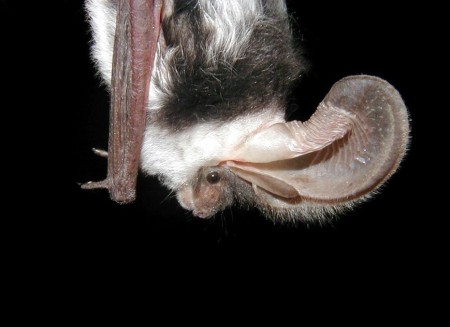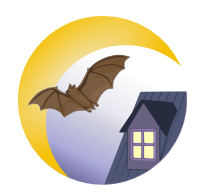Spotted bat

Credit: Paul Cryan , U.S. Geological Survey
Latin name: Euderma maculatum
Average size: Total length of 10-13 cm
Wingspan: 20-25 cm
Weight: 15-22 g
External characteristics: The name of the spotted bat comes from its three highly distinctive white spots located over each shoulder and on its rump. The surrounding dorsal fur is black, while the fur on its underside is lighter. The face is black and the wing membranes are pale. This bat is also recognizable by its huge pinkish ears, which have a large and broad tragus.
Habitat: This bat is rarely sighted and has a discontinuous distribution through its range across western North America. It generally inhabits coniferous forests and lowland deserts. Typically, day roosts occur in small cracks found in cliffs and stony outcrops. The spotted bat feeds in flight, using echolocation calls that are audible to the human ear, unlike most bat species whose calls are beyond the range of human hearing. Little is known about the winter biology of this bat throughout its entire range. No hibernating individuals have been found in British Columbia. It is possible that the spotted bat hibernates in crevices found in cliffs that are inaccessible to humans, or it may spend the winter outside British Columbia.
Reproduction: There is little information available on its reproduction, but the minimal data available suggests that mating takes place in autumn. Females produce one offspring weighing 20% of her body weight. The only pregnancy record for British Columbia suggests that young are born in late June or early July.
Seen in: British-Columbia

